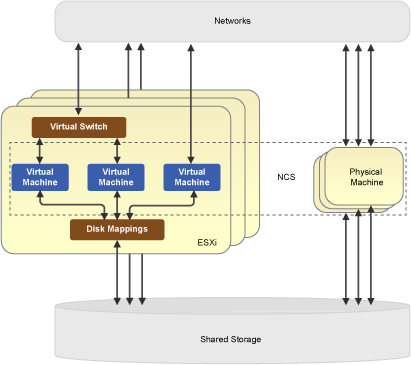1.1 Configuration Overview
A typical cluster (see Figure 1-1) consists of a number of machines that coordinate through computer networks to make resources highly available. Nodes in a cluster can be physical, virtual, or any combination of the two. The cluster resources often reside on shared storage.
Figure 1-1 Typical Cluster Configuration with Virtual and Physical Machines

A typical ESXi host machine includes virtual network switches, disk mappings, and virtual machines. A virtual machine can access the network directly through PCI pass-through, or through virtual switches inside the ESXi host.
Clustering of virtual machines requires shared devices such as:
-
Raw Disk Mappings (RDM)
-
Virtual Machine Disk (VMDK)
-
Virtual Storage Area Network (vSAN)
From the NCS point of view, there is no difference between a virtual machine and a physical machine. You can cluster any combination of them. Although NCS supports clustering mixtures of physical machines and virtual machines, it is easier to manage clusters where all nodes have the same or similar capacity.